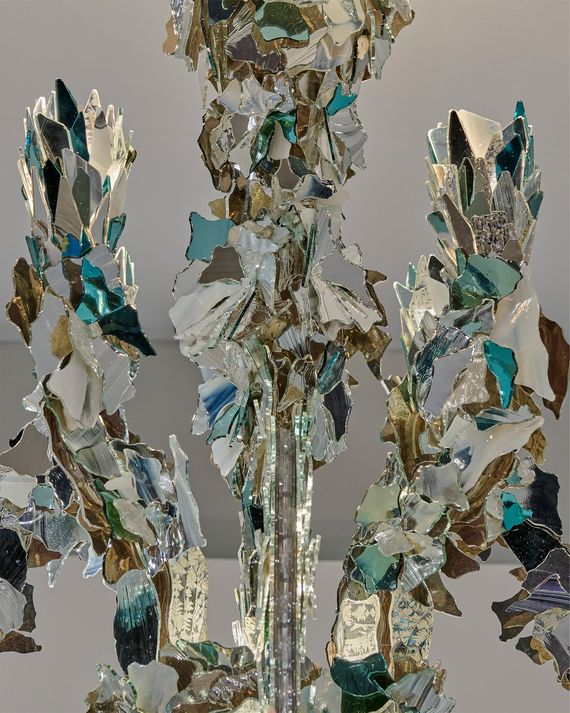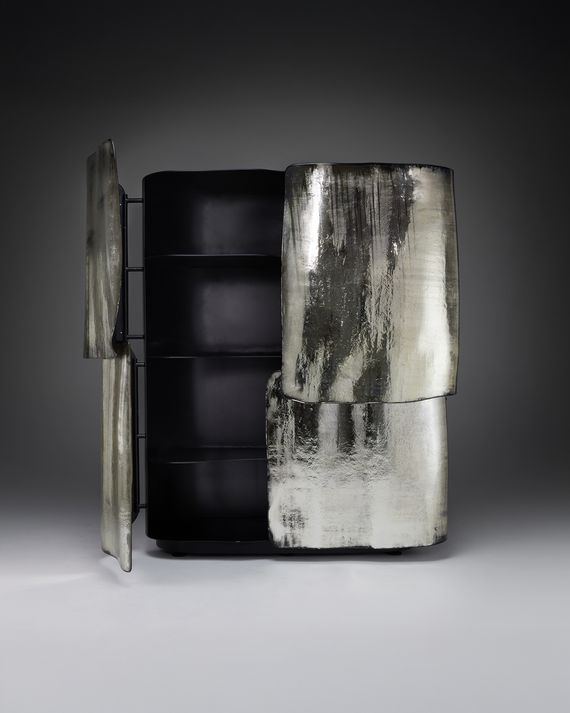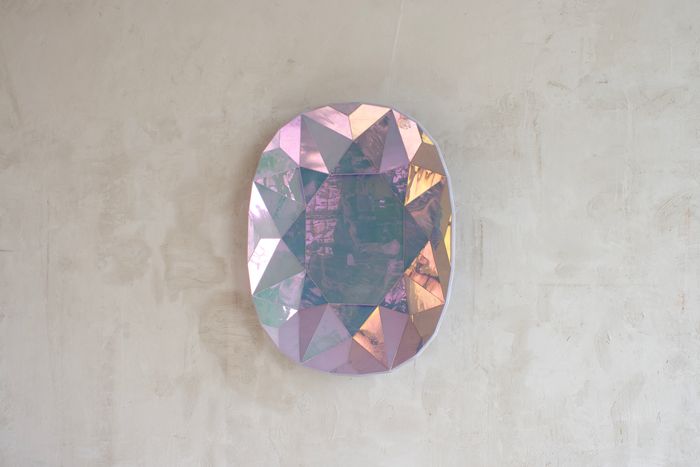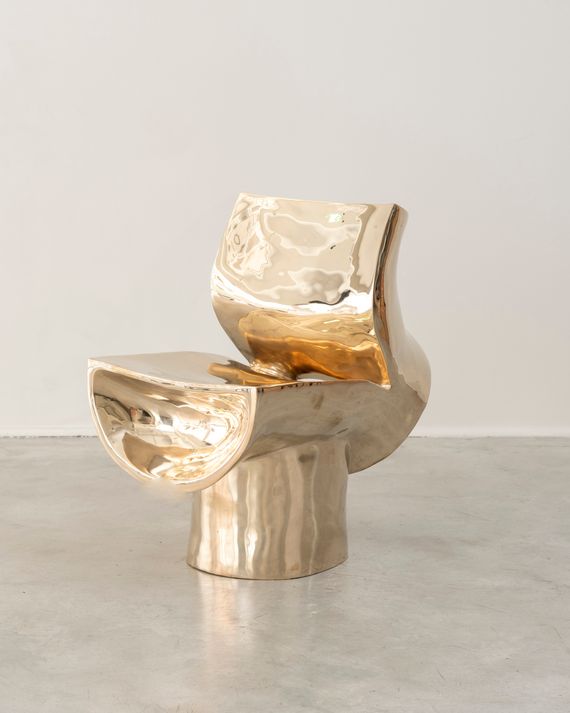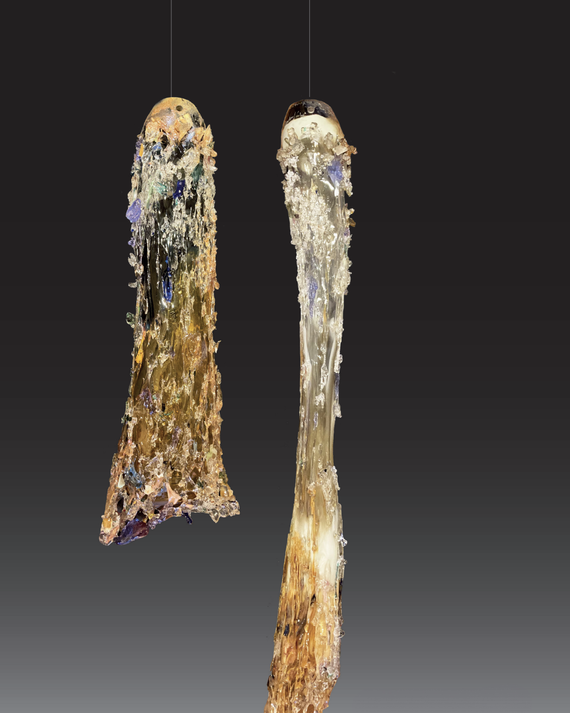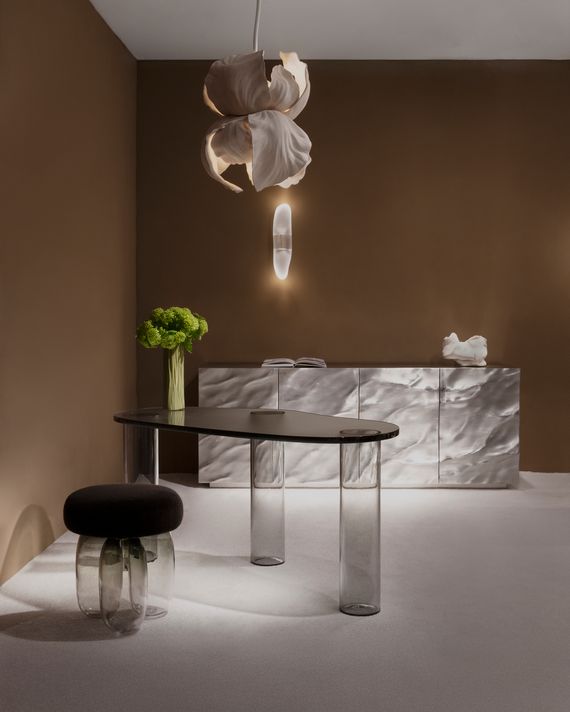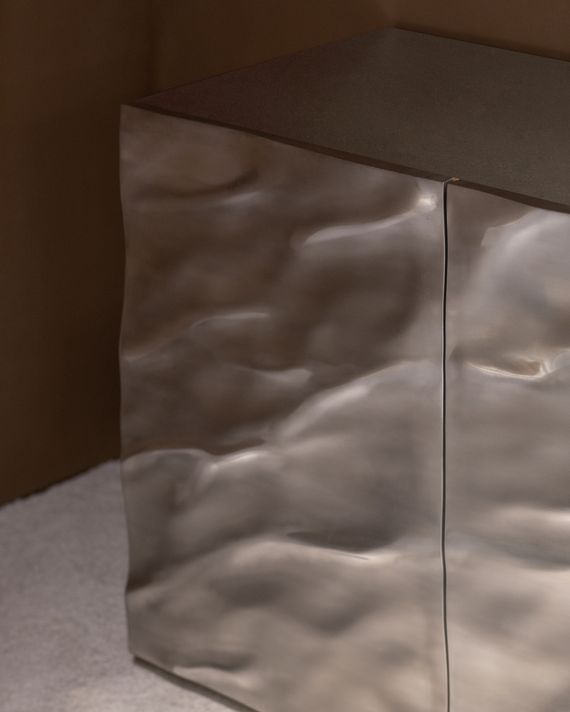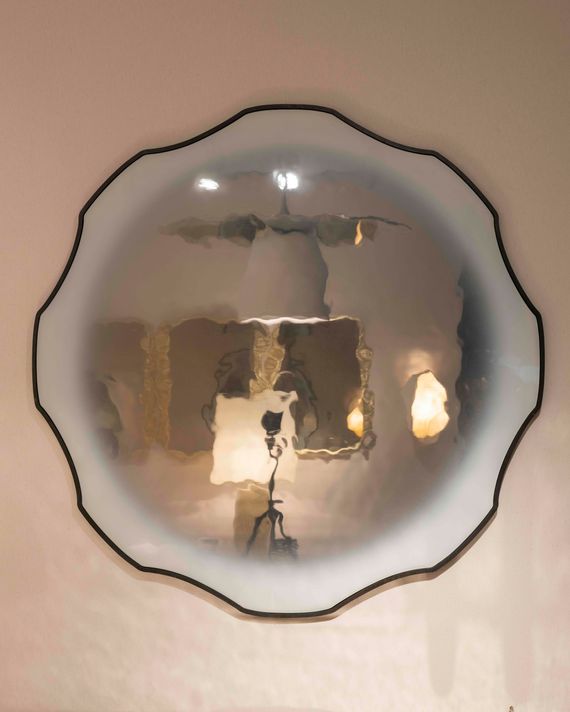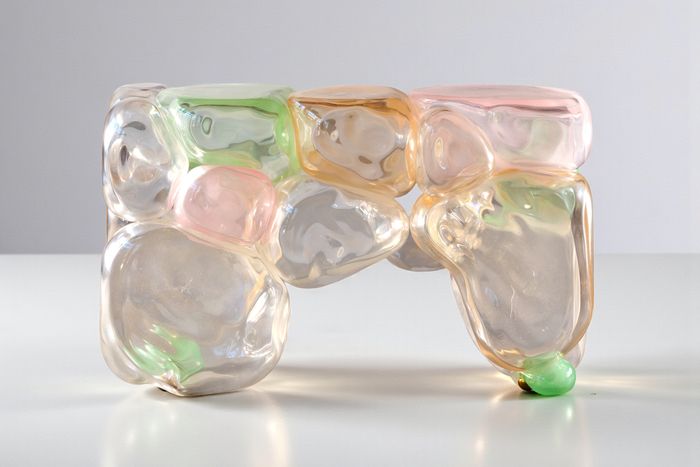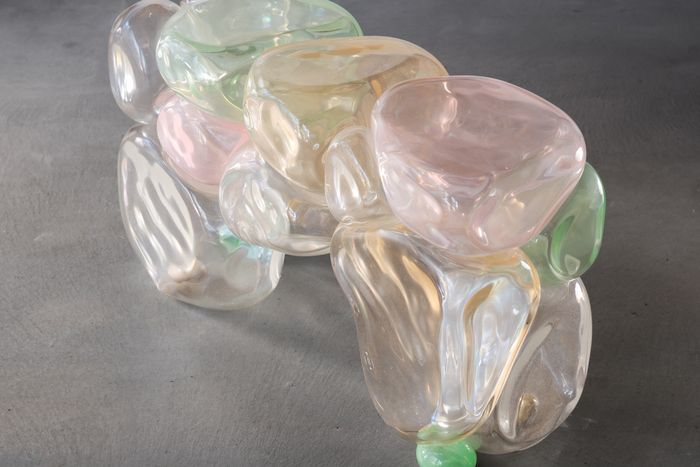Photo-Illustration: Curbed; Photos: Twenty First Gallery, Graham Pearson, Courtesy of Wexler Gallery, Courtesy of Gallery FUMI
Interiors leaned moody and dramatic this year. It was in the color palette, as more residences, a growing number of members’ clubs, and even some stores and offices were drenched in deep burgundies and chocolate browns. Elaborate millwork anchored densely floral wall coverings and intricately laid-out tile floors. Oversized armchairs and tables gleamed in dark-toned woods with textured details, marquetry, and other flourishes. The style was applied widely at the Salon Art + Design gallery fair earlier this month, where a familiar yet restrained Art Deco revival seemed to be in full force.
Another facet of the style provided a shimmering counterpoint to all that saturated lacquer and patterned upholstery: Iridescent and reflective surfaces — from gold leaf to patinated bronze, textured steel, tinted glass, and even resin — cropped up in everything from chandeliers to chairs. All that shine seemed to hint at a sense of optimism, or at least a desire to counter the moodiness of the dominant palette with a lighter touch.
Photo: Twenty First Gallery
Photo: Twenty First Gallery
Taking pride of place in New York–based Twenty First Gallery’s display, French designer Nathalie Ziegler’s Milano Chandelier diffuses light through its many iridescent and sandblasted glass elements. Loosely reflecting the contour of an elaborate neoclassical pendant lamp that one might expect to find in the Hall of Mirrors at Versailles, the almost pixel-like form is very much the sum of its parts. The interlocking and overlapping pieces were first handblown and then meticulously cut to form before being collaged together.
Photo: Graham Pearson
Photo: Graham Pearson
Presented by London’s Charles Burnand Gallery in what was arguably the fair’s best booth, JG Neukomm’s Abditio Cabinet is an armoire with four mirrored glass doors that fold over each other like artichoke petals. But to call them “mirrored” is an oversimplification; this isn’t an ’80s artifact, but something that looks much more organic. The glass layered over the mirrored sheets is uneven and bubbly, causing them to shift between transparency and opacity. Behind the doors, the body of the cabinet is a somber blackened steel, highlighting the contrast between its weighty core and the lightness of its outer shell.
Photo: Hellen Miller/Courtesy Gallery FUMI
Sam Orlando Miller’s Cielo Nuovo Iris is made up of faceted dichroic glass, giving it the look of a colorful mirrored gemstone on the wall. To create the effect, thin layers of metal oxide are applied to refract light when the piece is viewed from different angles, a technique often used in the optical industry. The British artist also applied an additional layer of paint to further diffuse the light. The piece was presented by London-based Gallery FUMI.
Photo: Courtesy of Gallery FUMI
Also at Gallery FUMI, Greek designer duo Voukenas Petrides’s Split Tube Chair gleamed from the floor. The chair, forged entirely out of bronze, doesn’t look at all like the precious metal, since it’s been polished to the point of being fully reflective. As the name suggests, the form is suggestive of a peeled, divided cylinder: both delicate and incredibly hardy. But like a lot of the pieces at Salon, these are not precision, machine-turned surfaces; the designers left folds and small curves in the surfaces, which reflect the light in multiple directions.
Photo: Courtesy of Todd Merrill Studio
Dutch artist Maarten Vrolijk’s Sakura pendants at Todd Merrill Studio are glass vessels that shimmer due to the jewel-toned fragments that cling to them. Rolled into the especially thick base forms when they’re still in a semi-liquid state, these shattered elements engage light in many directions. A gold-foil-covered wall accentuated the new designs’ luminescence.
Photo: Joe Kramm
French artisan and artist Pierre Bonnefille uses various craft techniques on materials like copper, pigment, and wood to experiment with surfaces and finishes. His painterly instincts were very much on display at New York’s Les Atelier Courbet booth, where he presented Bronze Painting 229. The large wall-piece demonstrates the range of effects liquid metal can have on a flat surface — in this case, a mesh base structure — as the material changed from its dripping and rippled state before solidifying and becoming glossy.
Photo: Leandro Viana
Photo: Leandro Viana
Mathieu Lehanneur, who designed the 2024 Paris Olympics torch, is known for his material experimentation, treatments that create the illusion of other elements. In his own booth at the fair, the French designer debuted new pieces in wood, ceramics, glass, and metal. With its ripplelike outer shell, the cast metal Balcony Sideboard translates how waves form and move across bodies of water into solid form. Not just pearlescent, its sculpted surface catches the light and creates dramatic shadows.
Photo: Peter Baker
French designer duo Nicolas and Sébastien Reese’s Acamas mirror is half painting, half reflective surface. Enclosed by a notched, circular aluminum frame, the main mirror is an uneven surface of blurry, scratched, and cloudy glass with a halo of increasingly opaque oxidation along its rim. Similar to Voukenas Petrides’s Split Tube Chair, the design’s reflectivity is warped. Objects appear to get lost in the frame like ghostly figures.
Photo: Courtesy of Wexler Gallery
Photo: Courtesy of Wexler Gallery
Henry Baumann’s Excessive Boo bench, presented by Philadelphia-based Wexler Gallery, looks like a bunch of colorful balloons pushed together and squeezed into a rectilinear form. These bubbling elements are, in fact, made out of semi-translucent, shiny resin that, combined together, look iridescent and still fluid.
See All



